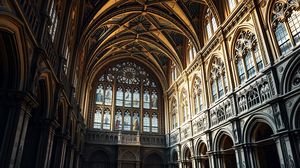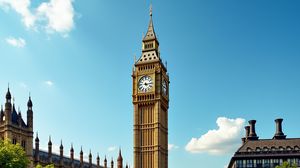
Lambeth Palace is a historic and architecturally significant building that has served as the London residence of the Archbishop of Canterbury since the 13th century. Situated on the south bank of the River Thames, it offers a fascinating glimpse into British religious history and ecclesiastical life.
The Palace boasts a blend of architectural styles, with elements ranging from medieval to Tudor and Victorian. One of its most striking features is the Great Hall, which was rebuilt after being destroyed in World War II and houses a marvellous hammerbeam roof.
Amazing enough, the Lollard's Tower, a surviving part of the palace, was used as a prison, demonstrating the Church's historical power and the often tumultuous nature of religious reform in England. The tower features small, iron-barred windows that hint at its darker past.
Visitors are often intrigued by the stunning garden at Lambeth Palace, which covers over 10 acres and is one of the oldest continuously cultivated gardens in London. It includes all manners of plant species and offers a serene escape from the urban hustle.
Besides its religious functions, Lambeth Palace serves as an important venue for ecumenical gatherings and discussions on pressing global issues. It reflects the Archbishop's commitment as a voice in modern societal dialogue.
The Palace Library, founded in 1610, is a treasure trove for historians with its vast collection of manuscripts and printed books. It is renowned for housing one of the most extensive collections of religious and ecclesiastical records in Europe.
Interestingly, the interior of Lambeth Palace includes hidden staircases and secret rooms, providing a reminder of its medieval origins and the need for seclusion and safety in turbulent times.
Lambeth Palace is not open to the public except on special occasions, but when the opportunity arises, it provides a unique and insightful experience into England's religious and cultural legacy.

Making the Most of Your Visit:
When you get the chance to visit Lambeth Palace, make sure you take your time exploring the Great Hall. The hammerbeam roof is a marvel of engineering and history, beautifully reconstructed after WWII, offering a sense of the grandeur that once was.
Don't miss the Lollard's Tower when you're there. It has a rather eerie history as a prison and those small, iron-barred windows give you a clue into its past. It's a sobering piece of the palace's darker stories.
Those gardens are a real gem. You wouldn't guess from the outside, but they're over 10 acres and you can feel the history in their soil. It's such a peaceful spot considering you're right in the middle of London.
If you're into books or archives, the Lambeth Palace Library is a must-see, especially when it's open for one of those special occasions. The collection there is one of a kind, especially if you're interested in religious history.
Finally, keep an eye out for the secret rooms and hidden staircases inside the palace. They're quite enchanting and give you a real sense of the secretive and strategic nature of the place during medieval times.

Visiting Times & Costs:
Lambeth Palace is not generally open to the public. However, it is occasionally open for public tours, special events, and charity open days. These events are limited and typically require advance booking, with details announced on an annual basis.
When open, there is usually an entrance fee for these tours, which contributes to the maintenance of the site and charitable purposes.
Visitors are encouraged to check availability and to secure tickets in advance for any open days or events.
As the palace is an historic building, some parts might present accessibility challenges for visitors with mobility issues, including uneven surfaces and stairs. It's recommended to contact the event organizers in advance for specific accessibility information.

Address & Map:

Nearby:























